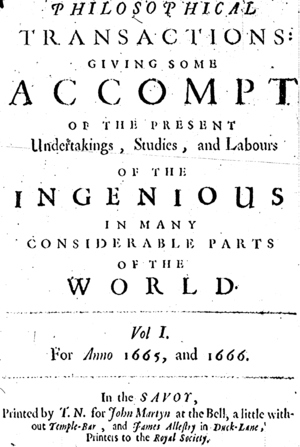
- Image via Wikipedia
THE SCIENTIFIC PAPER HAS LONG BEEN THE UNIT OF SCIENTIFIC KNOWLEDGE.
The scientific publishing industry as we know it today represents a structure of the past. It is profoundly tied to the medium of print, which is itself an artifact of a technical revolution hundreds of years old. Moreover, its routines and structures are rooted in paper as a communications and archiving technology, and its business models are based on the costs of physical distribution and review by a select few.
Of course, paper-based systems aren’t very adaptable to the world of the internet. The outdated—but wildly profitable—business models based on the print medium have led to skyrocketing costs for scholarly journals over the past 30 years, costs that greatly outpace increases in cost of living. This is at odds with the rapidly decreasing costs of digital publication and distribution. Even worse, the paper-based status quo relies on strictly enforced barriers to public access that prevent the rapid dissemination of vital knowledge.
The changes wrought by digital networks in other content industries, from music to cinema to journalism, are coming to the scientific publishing industry as well. Libraries are canceling subscriptions; funders—especially tax payers—are moving to ensure access to knowledge produced by their investment; and new business models are emerging to challenge the industry. For scientific publishing the days of securing profit margins through punitive pricing and aggressively enforced digital-rights management are numbered.
But science publishing isn’t just an industry. It’s also the core factory for knowledge transfer in the world. It has been since 1665, when the first journal was published asPhilosophical Transactions of the Royal Society. And we need to think about the knowledge first—that’s why these were called philosophical transactions, not economic ones.
Science knowledge turned into an economic transaction thanks to print. At the time, printing was the simplest, fastest, and most distributable way to take a piece of knowledge out of one brain and transfer it to another. The core elements of the scientific-knowledge “unit” were established quickly: author, date, journal issue number, pages. Peer review soon followed, and technologies for knowledge transfer via the print medium underwent their own series of revolutions and advances.
Printing was expensive, though, which meant that the process was also an early knowledge-compression algorithm. Scientific publishing was not just about being right; because each word cost money to copy and distribute, it was about being right in the smallest number of words possible. Someone had to pay for it—over time, typically a library.
So since the advent of scientific publishing, we’ve connected the idea of “knowledge” to the reality of “words printed on paper.” We have married the knowledge of science to the containers of science—journal articles, textbooks, and so on. Access was enabled through library visits to touch the physical artifact of knowledge, to read the words. The very fact that we call a scientific-knowledge unit a “paper” is a powerful illustration of how deeply the idea of knowledge is tied to the medium.
Yet today we are escaping many of the constraints of analog containers for culture. The album simply isn’t the native “unit” for music in the digital world; now the unit is the song. The end user no longer has to passively consume content. Now we’re encouraged to rip, mix, and burn. After all, as the early ads for iTunes promised us, it’s our music.
Related articles
- Will a Silver Bullet Save Sci-Tech Publishers? (arnoldit.com)








